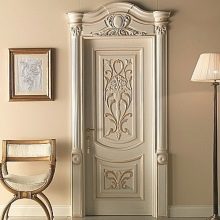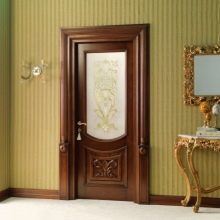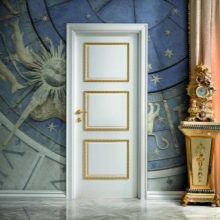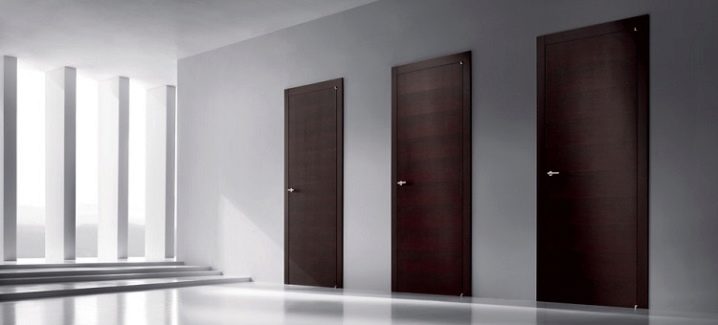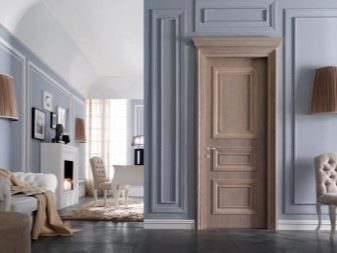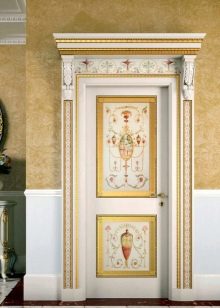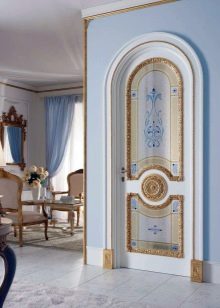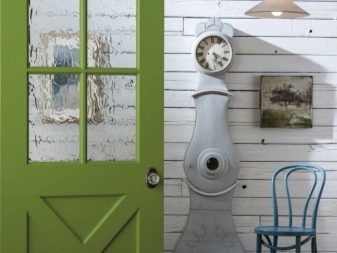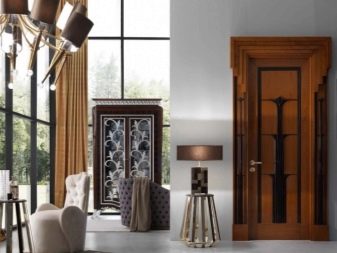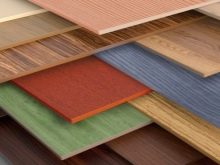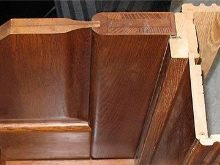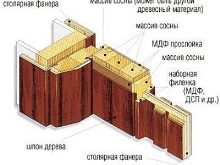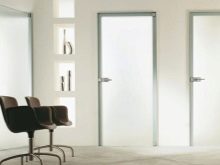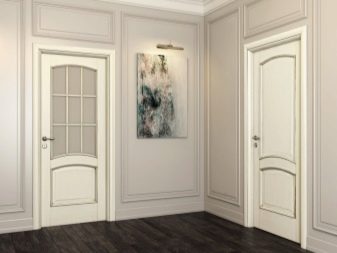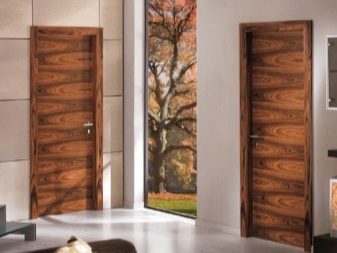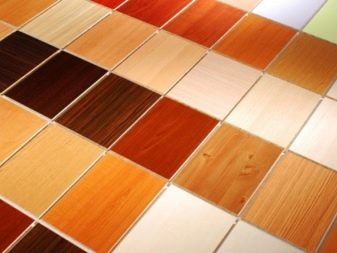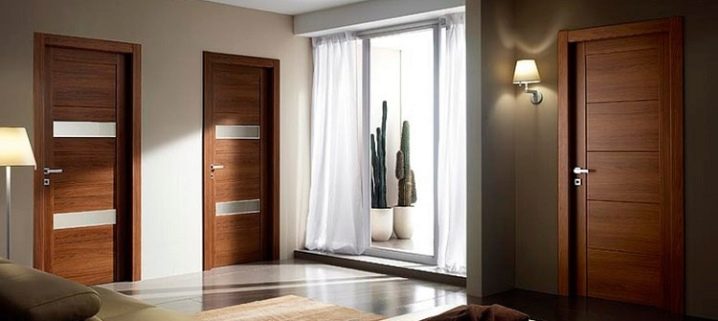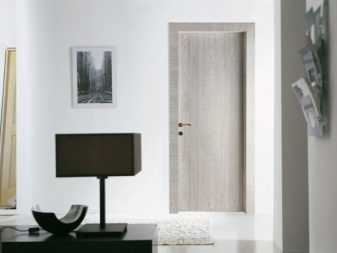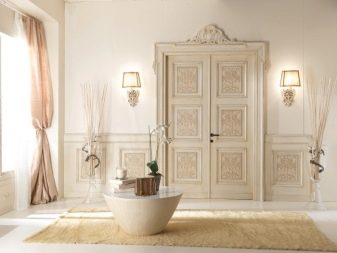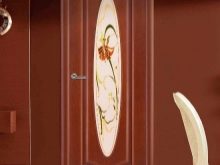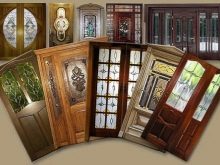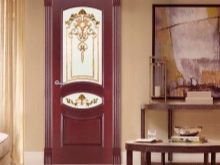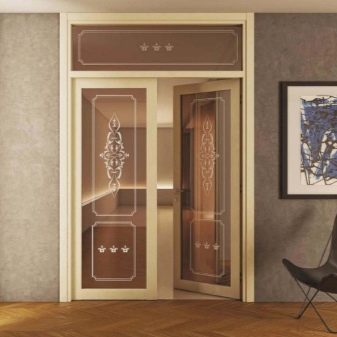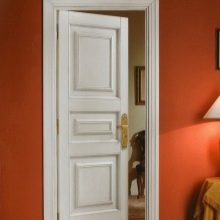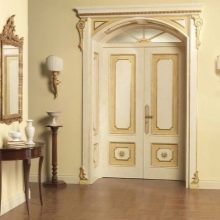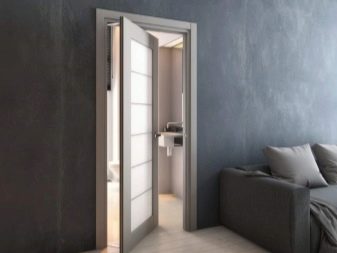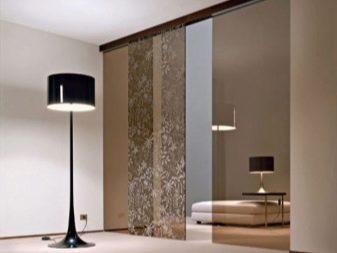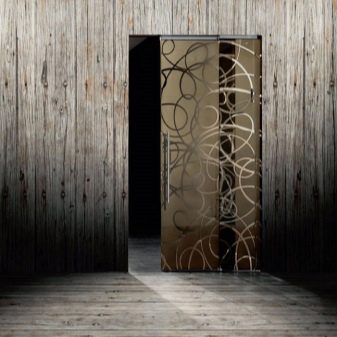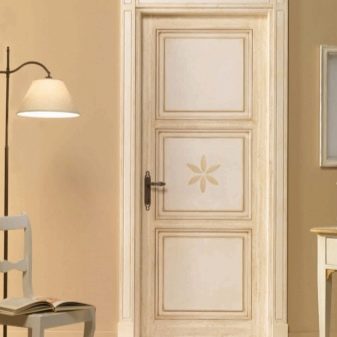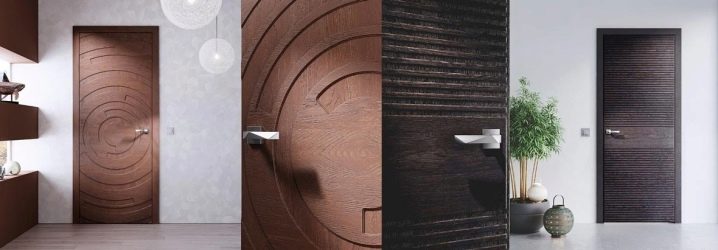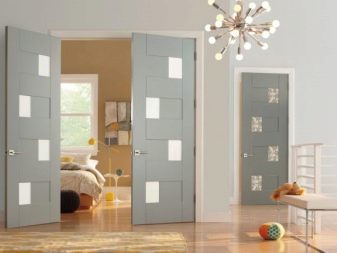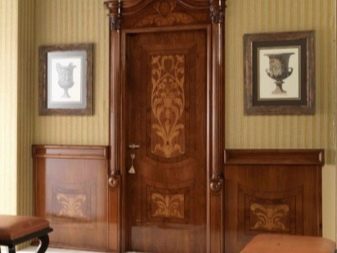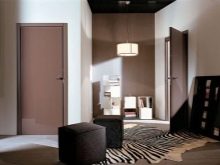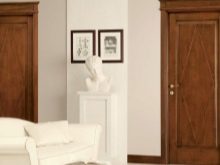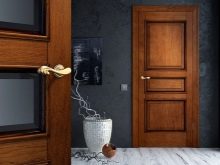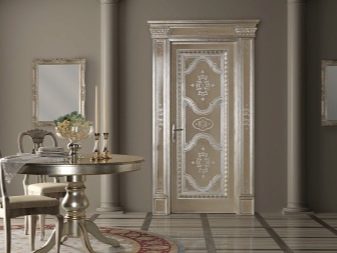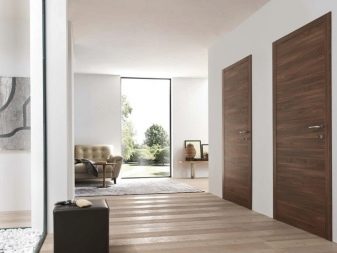Italian doors: elegance and chic
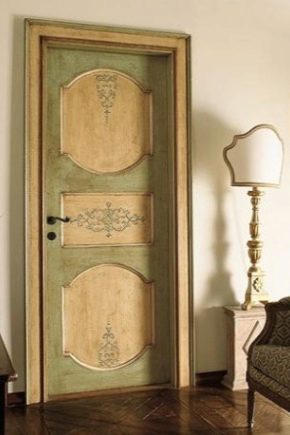
Italy is considered one of the first countries that have established the production of interior doors. Therefore, here in almost every city there is at least a small, but its own factory for their manufacture. This niche trade has a clear division into groups, and each plant specializes in the production of a particular type of product.
Kinds
All Italian doors can be divided into three types. At the same time, the first two types are mass production, which are mainly carried out by large Italian factories. Their technologies are well-known and today many firms in different countries operate under an Italian license or (and) on Italian equipment.
- First view - mainly doors made of glued bursa with a smooth veneer finish. The door frame has a frame, also made of lamellas, but inside it is hollow. They have several classic colors, a smooth surface and belong to the category of economy class. The combination of relatively low cost and excellent quality makes these products popular among the masses not only in their homeland, but also in the international market.
- To the second group This type of product includes doors that are also made of lamella canvases, however, unlike the first type, it uses veneer of more valuable wood species. In addition, here not only the box is made of the bars, it is also the insides of the door. Due to the use of a volume panel and figured details, the design of the product is more interesting. The price of such products is slightly higher than in the previous group, but at the same time it is more affordable than solid wood doors. Due to the greater mass, such doors are more durable than the first type.
- Third group doors - from the array - is considered elite. The manufacturing technology of products from the array isthat it is extremely difficult to use in the mass flow, therefore, mainly small family businesses that use manual labor specialize in the production of such doors. Wooden bar before work must be dried away from direct sunlight and subject to certain temperature conditions. The drying process itself can take several months, and for the entire production cycle of one such door, from design to installation, it can take up to six months.
Since the design of each tree is unique, each product made from it has its own unique design.
Materials
For the production of classic Italian interior doors, wood and all its derivatives — lamellae, veneer, panels, etc. — are used predominantly. However, with the development of technological progress, consumer preferences are changing, and the list of raw materials for manufacturing these products has expanded.
Italian craftsmen are trying to keep up with the times and use in their technologies not only the usual MDF and particleboard, but also cork wood, bamboo, plastic and even fabric.In this case, polymeric materials are heated and under the influence of high temperatures take the most unexpected forms.
In one product can be combined several types of different breeds. In wooden and plastic doors you can often find glass inserts or metal parts. For serial production still use several types of raw materials.
MDF has a number of advantages: reasonable price, aesthetic appearance, a variety of colors and, importantly, environmental friendliness. Among the disadvantages of this material are its ability to quickly ignite, fragility and inability to resist moisture.
Veneer is a thin plates of wood, which decorate the door leaf and box. The doors themselves can be made of less valuable raw materials. Italian doors covered with natural veneer thickness of 5 mm. Without being a specialist, it is quite difficult to distinguish a product made of natural veneer from solid wood.
Veneers are usually decorated with hollow door leafs, as well as doors made of multi-layer cardboard. To finish the door leaf strips of veneer are soldered together in one sheet of the desired size.At the same time they should coincide with each other according to the figure.
The disadvantage of this material is its insufficient strength, since it breaks very easily.
The array can be used both for the hollow door frame and for creating monolithic structures.
Distinctive features of this type of doors are their reliability, durability and, as a result, longer service life. To make the door durable, but lightweight, the frame is most often made of pine, and for greater safety it is sometimes covered with enamel, which can additionally be decorated with a patina.
Distinguish between doors spliced and combined array. In the first case, the construction consists of three layers of wooden lamella glued together, but from the outside it resembles a parquet pattern. The combined array is collected from several types of material. It may include not only solid wood, but also MDF and other materials.
Recently, glass doors with an aluminum frame have become fashionable. This design is lighter compared to wooden versions. In such models safety and especially strong glass is applied.Before installation, it undergoes a special hardening at high temperatures, after which its strength increases several times. And even if it breaks, the fragments will be small and unsharp.
Dimensions
Italian-made door blocks most often meet the Russian standards for interior openings, therefore, giving preference to European quality, you can not be afraid that they will not fit in size. And even if a slight mismatch happens, the feature of these structures is such that the frame can be slightly adjusted to the required parameters.
To match the door frame in width with the door leaf, it can be extended using special slats. Since the quality of the Italian doors has already become an axiom, in order to please him, some consumers are ready not only to change the doorways, but also to demolish entire walls.
Colour
The color scheme of interior doors made in Italy is quite extensive in order to satisfy the most demanding taste. The assortment contains almost all shades that only exist in nature: from pure white to coal black, from light soothing tones to the most inconceivable colors.
Light beech, bleached oak, mahogany, ash, as well as the world-famous Italian nut - a kind of business card manufacturers of this sunny country. These and many other colors have long become classics of the genre.
For lovers of Art Nouveau style, the doors made of colored plastic will suit: rich blue, noble chocolate, aggressive red, life-affirming olive - the names can be listed indefinitely.
Fans of high-tech will appreciate the strict range of glass and shiny metal. At the same time glass color can change - from neutral transparent to tinted.
Painting is done in several layers after a certain period of time. In this case, you can get a matte texture or glossy finish. If desired, with the help of special paints, you can even give the surface a metal effect.
All shades of white deserve a separate discussion: this color is universal and will fit in almost any interior. White is combined with both monophonic walls, and with various ornaments. It is in perfect harmony with pastel tones, and also looks favorably in contrast with dark ones.
In addition, it is possible to order the painting of doors in different colors so that its design is combined with both rooms, which it will combine.
Design
Italian designers all over the world are rightfully considered fashion trendsetters. It is they who are among the first to pick up new fashion trends. In combination with high skill accumulated by more than one generation, modern technologies in the hands of experienced workers are able to work wonders and make the most unexpected fantasies a reality.
The range of Italian doors is so diverse that you can talk about it endlessly. Those who like quiet classics, often choose doors made of wood. Most often these are models made in a single color scale. At the same time, the doors can be either deaf (without inserts) or have various inserts made of glass and other materials.
Versatile are models of doors with stained glass. They are suitable for almost any interior - whether modern or Provence.
Doors can be solid or glazed, painted in any color - from classic to avant-garde. Moreover, each side of the door leaf can be made in different shades,each of which optimally matches the finishing of adjacent rooms.
As for the glazing, it is distinguished by several basic parameters:
- Colour. This is the foundation of all the basics. In addition to traditional transparent, pure white or tinted glass, Italian designers offer multi-colored stained glass windows that resemble Catholic cathedrals.
- The form. Fans of the right lines can choose doors with horizontal or vertical inserts. However, no less elegant look inserts with curved abstract additions.
- Texture. Glass can be plain or mirror, matte or glossy, smooth or embossed, with or without a pattern. In addition, the pattern itself can be flat or in bulk.
- The decor. Doors with glass inserts, having a backlight, will add warmth and comfort to the interior. In addition, the door glass can be decorated with forged lace, dried flowers. Recently it has become fashionable to decorate various interior items with Swarovski crystals or rhinestones. Art lovers can order any image on the door. This may be a standard picture from the manufacturer’s catalog or a variant proposed by the customer - for example, a photo from a personal archive or a famous picture.
The forms of the Italian doors themselves are varied.In addition to the traditional rectangular options, there are also arched options in the catalogs of famous brands. Individual sketches can be used to make non-standard shapes - round or with increased height. Technology Italian factories allow you to complete an order of any complexity.
Doors can be of a swing type, which open only in one direction, or of the pendulum type - it can be opened in any direction. The coupe doors look very interesting. With their help, you can zone the space inside the room - for example, to separate the dressing room. For a small studio type apartment, a folding door will be a real find.
How to choose?
When choosing an interior door, you need to be guided by some knowledge. Everything is important here - even coverage. If it is paint, then the layer should be perfectly smooth. If it is a high quality lacquer and when pressed on the lacquered surface it should not leave any marks.
Real Italian doors, even if they do not belong to the premium class, have a perfectly flat surface, without chips and visible flaws. All seals and sealants fix the door as accurately as possible at the joints.At the same time seals should be soft, and their presence is mandatory. Well-known companies, such as Italon, value their reputation.
The box, the canvas itself, as well as the platbands must be present in the complete set and match in color and texture. The same applies to the porch, which provides sound and heat insulation.
Before buying, ask the seller about the fire safety class. The higher it is, the safer the product being purchased.
Advantages and disadvantages
Among the main advantages of Italian-made doors are:
- Impeccable quality ensured by tight control at all stages of production. This can be judged by the many enthusiastic reviews of grateful customers.
- Huge selection of models and designs, allowing you to choose the option for any income.
The disadvantages include:
- The high price of the product compared with other manufacturers.
- The time of manufacture of the doors may be delayed. This is associated with a complex manufacturing scheme, as well as with a logistics and transportation system.
Modern examples and options
On the Russian market, Italian products are represented by a number of manufacturers.Among them are both relatively young companies and firms with an already known name. Virtually each of these manufacturers specializes in working with rare woods.
The alder doors produced by the aforementioned company are famous for their peculiar design - this wood has a pleasant reddish tint after processing. Wood perfectly withstands moisture, so these doors can be safely put in the bath and the kitchen.
Tulip veneer gives a beautiful polished surface to the canvas. This tree is quite capricious in work, and due to its high cost, an array of tulip tree is extremely rare. It is often used in the decoration and decoration.
Most Italian doors are mounted without nails. Such designs have a more aesthetic appearance, while maintaining their reliability.
In addition, modern technologies have significantly simplified the door construction and now even with external impressiveness, the door can be relatively light. This is achieved through the use of lightweight frames.
About the difference between Italian interior doors, see in this video.
